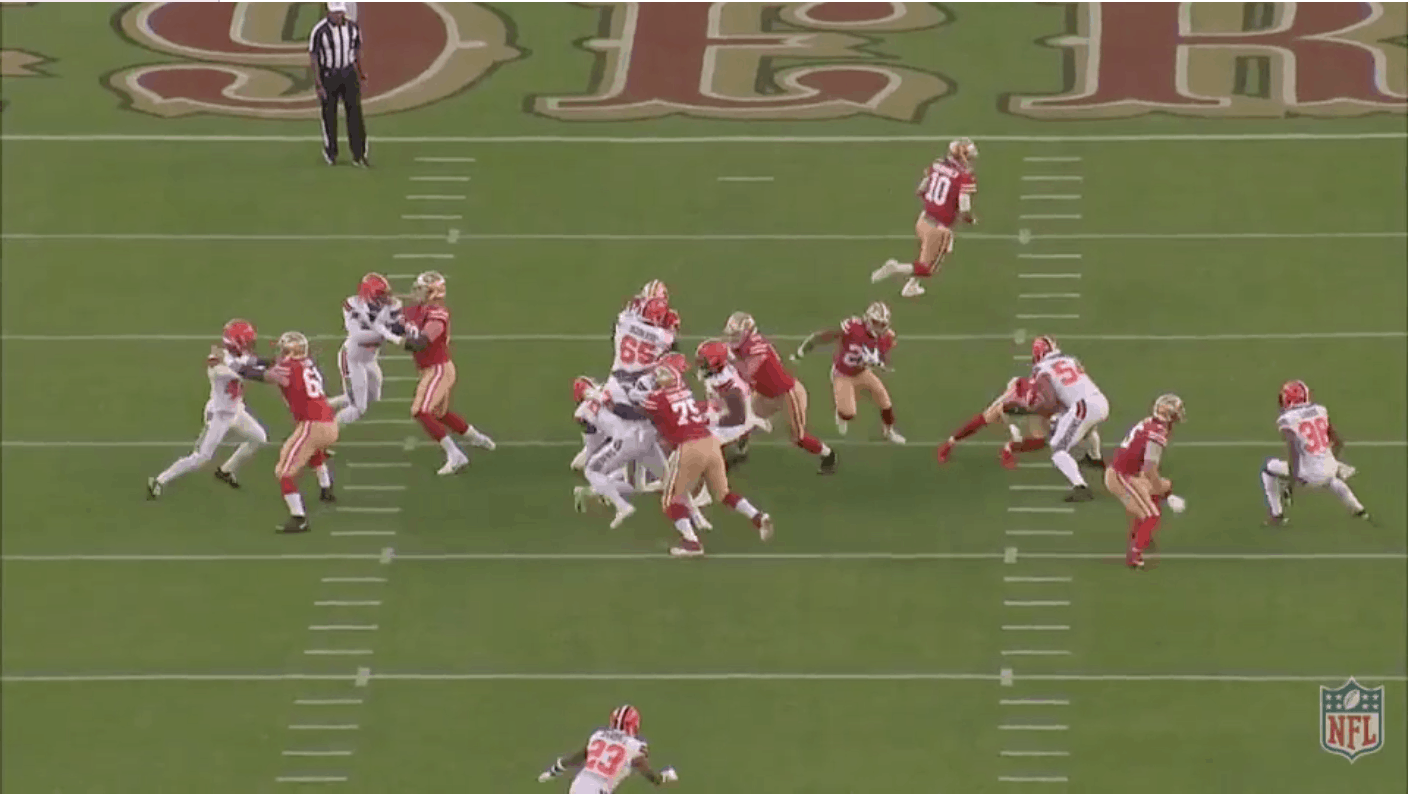Over the past week, you might have seen a graphic that highlighted the team speed for this year’s two Super Bowl teams, the San Francisco 49ers and Kansas City Chiefs, from Next Gen Stats.
Speed wins in today's NFL.
Super Bowl LIV will feature two of the fastest offenses in the NFL when the Chiefs take on the 49ers in Miami.
The @Chiefs (13.36 MPH) & @49ers (13.35 MPH) rank 1st & 2nd in average top speed by ball carriers this season.#ChiefsKingdom | #GoNiners pic.twitter.com/ndZP0Dw1cz
— Next Gen Stats (@NextGenStats) January 20, 2020
Yes, the Chiefs and 49ers are quite fast but those top speeds reflect more on the opportunity to reach top speed than the players’ speed itself. While both of these teams would probably still be at the top of this list if the average player speed was tracked, what that specific metric shows is how well the Chiefs and 49ers get their fast players in position to hit top speed. All that comes down to creating space and these two teams might be best at creating space on offense.
The play with the fastest ball carrier during the season came from the 49ers on an 83-yard run from Matt Brieda against the Cleveland Browns in Week 5. San Francisco did all the things an offense probably shouldn’t do — come out on a 1st and 10 deep in their own territory with heavy personnel and run against an 8-man box.
But Kyle Shanahan was able to use that to his advantage to create a big play. Before the snap, Kyle Juszcyzk motioned from being offset to a traditional I formation. At the snap, he kept his initial movement to the right, which caused the linebackers to flow in that direction. Before Juszczyk got to the line, he changed direction and went back to the left. His motion was able to clear out the box and create a hole that left Brieda with just a safety to beat.

















